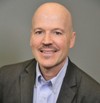The Federal Communications Commission has freed up vacant airwaves between TV channels -- called “white spaces” -- to unleash a host of new technologies, such as “super Wi-Fi,” and myriad other diverse applications. This is the first significant block of spectrum made available for unlicensed use in more than 20 years.
TV white space spectrum is considered prime real estate because the 300 - 400 MHz signal travel long distances well and penetrate walls, making it ideally suited for mobile wireless devices. The National Broadband Plan noted the importance of unlicensed spectrum in creating opportunities for new technologies to blossom and recommended that the Commission complete the TV white spaces. The Second Memorandum Opinion and Order (Second MO&O) adopted 9/23 resolves numerous legal and technical issues. Notably, the Order eliminates the requirement that TV bands devices that incorporate geo-location and database access must also include sensing technology to detect the signals of TV stations and low-power auxiliary service stations (wireless microphones).
It also requires wireless microphone users who seek to register in the TV bands databases to certify that they will use all available channels from 7 through 51 prior to requesting registration. Requests to register in the database will be public, thus allowing interested parties to weigh in on any given request.
The Commission is also taking steps to ensure that incumbent services are protected from interference from the use of white spaces in various ways. In particular, the Order reserves two vacant UHF channels for wireless microphones and other low power auxiliary service devices in all areas of the country. It also maintains a reasonable separation distance between TV White Space device and wireless microphone usage permitted to be registered in the database.
FCC Chairman Julius Genachowski has called the new wireless broadband services that could eventually operate over this spectrum "Wi-Fi on steroids." Wi-Fi uses unlicensed spectrum that was opened up by the FCC in 1985, which was the last time the FCC allocated unlicensed spectrum. This high-frequency spectrum was originally used for cordless phones and garage door openers, but the spectrum later found broader use in high speed, in-home Internet connectivity via Wi-Fi.
Chairman Genachowski is optimistic that the new unlicensed spectrum will help create a robust ecosystem, such as the one that has developed around Wi-Fi. "This new unlicensed spectrum will be a powerful platform for innovation," Genachowski said. "When we unleash American ingenuity, great things happen."
TV white space spectrum is considered prime real estate because the 300 - 400 MHz signal travel long distances well and penetrate walls, making it ideally suited for mobile wireless devices. The National Broadband Plan noted the importance of unlicensed spectrum in creating opportunities for new technologies to blossom and recommended that the Commission complete the TV white spaces. The Second Memorandum Opinion and Order (Second MO&O) adopted 9/23 resolves numerous legal and technical issues. Notably, the Order eliminates the requirement that TV bands devices that incorporate geo-location and database access must also include sensing technology to detect the signals of TV stations and low-power auxiliary service stations (wireless microphones).
It also requires wireless microphone users who seek to register in the TV bands databases to certify that they will use all available channels from 7 through 51 prior to requesting registration. Requests to register in the database will be public, thus allowing interested parties to weigh in on any given request.
The Commission is also taking steps to ensure that incumbent services are protected from interference from the use of white spaces in various ways. In particular, the Order reserves two vacant UHF channels for wireless microphones and other low power auxiliary service devices in all areas of the country. It also maintains a reasonable separation distance between TV White Space device and wireless microphone usage permitted to be registered in the database.
FCC Chairman Julius Genachowski has called the new wireless broadband services that could eventually operate over this spectrum "Wi-Fi on steroids." Wi-Fi uses unlicensed spectrum that was opened up by the FCC in 1985, which was the last time the FCC allocated unlicensed spectrum. This high-frequency spectrum was originally used for cordless phones and garage door openers, but the spectrum later found broader use in high speed, in-home Internet connectivity via Wi-Fi.
Chairman Genachowski is optimistic that the new unlicensed spectrum will help create a robust ecosystem, such as the one that has developed around Wi-Fi. "This new unlicensed spectrum will be a powerful platform for innovation," Genachowski said. "When we unleash American ingenuity, great things happen."


